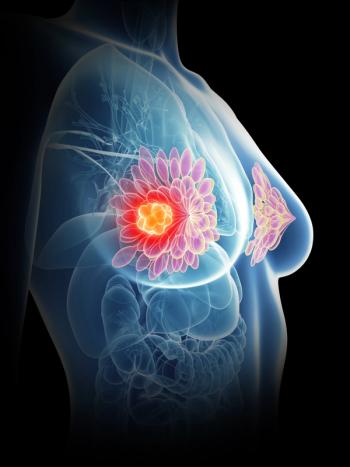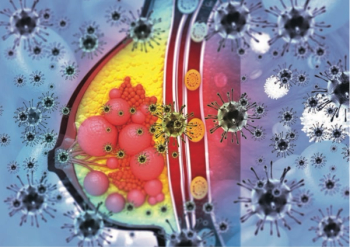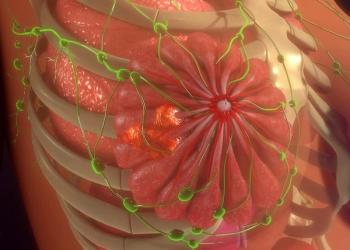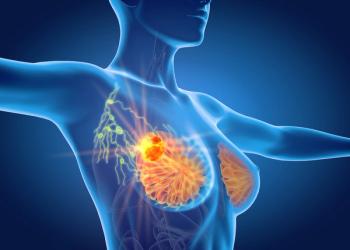
- ONCOLOGY Vol 10 No 4
- Volume 10
- Issue 4
New Sequential Dosing Regimen Shows Promise in Node-Positive Breast Cancer
Sequential dosing may improve the effectiveness of adjuvant chemotherapy regimens in node-positive breast cancer, by limiting overlapping toxicity while maximizing dose-intensity, Clifford A. Hudis, MD, said at the Chemotherapy Foundation's 13th annual symposium. At Memorial Sloan-Kettering Cancer Center, where Dr. Hudis is assistant attending physician in the Breast Cancer Medicine Service, researchers are testing a sequential dosing regimen that combines doxorubicin, paclitaxel (Taxol), and cyclophosphamide, supported by granulocyte-colony stimulating factor (G-CSF, Neupogen).
Sequential dosing may improve the effectiveness of adjuvant chemotherapyregimens in node-positive breast cancer, by limiting overlappingtoxicity while maximizing dose-intensity, Clifford A. Hudis, MD,said at the Chemotherapy Foundation's 13th annual symposium. AtMemorial Sloan-Kettering Cancer Center, where Dr. Hudis is assistantattending physician in the Breast Cancer Medicine Service, researchersare testing a sequential dosing regimen that combines doxorubicin,paclitaxel (Taxol), and cyclophosphamide, supported by granulocyte-colonystimulating factor (G-CSF, Neupogen). There is increasing evidencethat higher dose intensity yields improved disease-free survivalin women with four or more positive axillary nodes and that sequentialdosing is superior to alternate dosing, Dr. Hudis said. He citedthe Italian breast cancer study led by Dr. Gianni Bonadonna inwhich a sequence of four doses of doxorubicin, followed by eightdoses of cyclophosphamide, methotrexate, and fluorouracil (CMF)proved more effective than one dose of doxorubicin followed bytwo doses of CMF in four alternating cycles. Phase II TrialForty-twowomen were enrolled in the phase II sequential therapy trial atMemorial Sloan-Kettering, Dr. Hudis said. All had completely resectedbreast cancer involving four or more ipsilateral axillary lymphnodes (median positive nodes: 8; median tumor size: 3 cm). Thedosing schedule was 90 mg/m² of IV doxorubicin every 14 days× 3, followed by 250 mg/m² of paclitaxel over 24 hoursevery 14 days × 3, then 3 g/m² of IV cyclophosphamideevery 14 days × 3. All nine cycles were supported by G-CSFon days 3 through 10. Alopecia was universal, Dr. Hudis said.Grade 3 nonhematologic toxicities included fatigue and bone painin about one quarter of patients, stomatitis and dermatologictoxicity, neurosensory toxicity, and nausea. Fewer than 10% ofpatients had joint pain, diarrhea, vomiting, dyspnea, muscle aches,or edema.At the end of the trial, amenorrheic patients with positiveestrogen or progesterone receptor assays (19 in all) were startedon a 5-year course of tamoxifen (Nolvadex), 20 mg/day. Patientswith 10 or more positive nodes, tumors exceeding 5 cm, or lessthan complete mastectomy (24 in all) were treated with radiationtherapy.With a median follow-up of 577 days, there were 7 relapses.The disease-free survival is 85%. Dr. Hudis concluded that sequentialdose-dense doxorubicin, paclitaxel, and cyclophosphamide representsa promising new regimen, with acceptable toxicity, as adjuvanttherapy for breast cancer. Further studies are underway to confirmthis conclusion.
Articles in this issue
over 29 years ago
Radiosurgery Plus Sensitizer Tested for Brain Tumorsover 29 years ago
Regular NSAID Use Appears to Reduce Breast Cancer Severityover 29 years ago
Deaths from Melanoma--United States, 1973-1992over 29 years ago
Survivors of Childhood Cancer Face Other Medical Risks As Adultsover 29 years ago
Post-Transplantation Complications of Unrelated Bone Marrowover 29 years ago
Intensified VICE Regimen May Improve SCLC SurvivalNewsletter
Stay up to date on recent advances in the multidisciplinary approach to cancer.

















































































